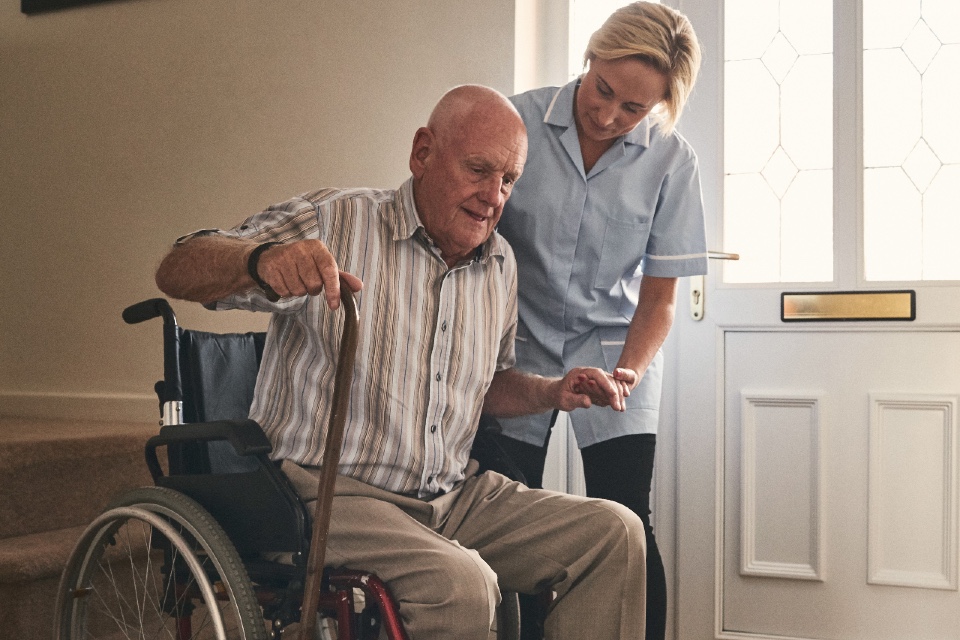A number of pioneering local authorities are now implementing the effective family safeguarding model. Sinead Keeney, registered social worker and Business Application Consultant at Servelec, explains how digital case management is supporting the roll-out of the successful framework across local government…
In September last year, round two of the Department for Education’s Children’s Social Care Innovation Programme found that the family safeguarding model is “replicable and effective” in preventing children going into care and reducing child protection plans.
The aim of family safeguarding is to get people who are supporting the same family to work in a team, sharing their insights and concerns to ultimately improve outcomes. It is this integrated approach that has helped to reduce both the numbers of children going into care and costs across public services, at Hertfordshire County Council.
We’ve been working in partnership with Hertfordshire, who pioneered the model, to help facilitate the implementation of family safeguarding at a number of local authorities.
Speaking to a social workers’ values
At the heart of a successful family safeguarding model is collaboration. The approach sees specialist practitioners – with expertise in areas such as domestic abuse, mental health or substance misuse – integrated within children’s safeguarding teams, with the aim of providing comprehensive support.
Walsall Council launched its family safeguarding model in September 2020. The strength-based approach has been supporting parents to make positive changes to family life after they have been referred to children’s services. Since being adopted, it has seen similar levels of success to Hertfordshire, with 159 vulnerable children in 101 families across Walsall already being supported using this new model.
“Social work staff are saying that the family safeguarding model is how social work should be. It really chimes with the values of social workers, because it is strength-based and family-oriented,” said Walsall’s Family Safeguarding Programme Manager, Helen Billings.
By having parental mental health, substance misuse and domestic abuse specialists working together with children’s social workers as one team, support can be provided in a more seamless way with noticeable positive outcomes for families. In just a few months, Walsall Council has already seen a significant drop in the number of children on a child protection plan and is already hearing some powerful stories about families who have been supported by this new approach.
Workflows proven to work well
Servelec’s social care team has been using the successful Hertfordshire model to standardise a Family Safeguarding Workbook, which can then be tailored to meet another local authority’s specific needs. We’ve been working with Walsall Council to implement the Workbook into Mosaic, Servelec’s social care case management system, which allows which allows multiple practitioners to engage with a family in one very clear workflow.
The group working functionality in Mosaic enables social care professionals to input information against multiple records at the same time. This means they only have to update information on individual family members once, creating more efficient working practices, and reducing the risk of human error. As well as recording workflow against multiple children at the same time, other features include adding case notes, change of address or changes to personal and professional relationships, which can be applied to all or specific members of the family at once.
“We started with the intention of only using the Workbook for new cases, but it quickly became apparent that some of the existing cases would really benefit from family safeguarding, so we’ve now introduced a new drop down which allows people to retrospectively open the Workbook. There’s been a level of flexibility that we’ve been able to utilise to help others manage family safeguarding really well,” explained Helen.
Funding for future development
The family safeguarding model has already improved safeguarding outcomes for children and families across the country, and with further Department of Education investment, there is an exciting opportunity to develop the approach further.
Over the coming months, our social care team will continue to build on and evolve our forms and workflows to reflect the ever-changing requirements of local government, and to support our local authorities in creating effective safeguarding models for families across the UK.
At Walsall, social care workers are committed to delivering the successful Hertfordshire model, and are considering using some of the key principles with other groups of families. “We think this approach would work really well for some of our over 13s, and families where the children have disabilities,” said Helen.
She added: “There is something about the Workbook approach – the collaborative notetaking – that we think will work well for other types of children. We are exploring that at the moment.
“Our social workers are very committed and interested in making the new model work because they see its value. People are managing to navigate the complexities of a new system and remain motivated to do so.”
The government has now launched an independent review into the children’s care sector in England, which will look at every area of the care system; from a child’s first referral to social services to outcomes for children leaving care at 18. The review will also examine “capacity and capability of the system to support and strengthen families in order to prevent children being taken into care unnecessarily”.
The successful family safeguarding model is proving to provide better support for families across the country, and has the potential to make lasting, beneficial changes to their lives.
3 steps to family safeguarding success
Helen Billings, Family Safeguarding Programme Manager at Walsall Council, offers three key pieces of advice to other local authorities considering implementing a family safeguarding model:
- Don’t dilute the model – if you are going to do it, use all of the components in the way they are designed. It’s not a pick and mix, it’s the interaction of all of the components that’s really important.
- It is a partnership approach – local authorities cannot go it alone. They have to work well with people in their local economy, their national partners and their technology partners, who can support them at every step.
- In order to see real benefit and make an impact, you need to really invest in the development and support of your staff. People must have the support, the capacity and the training to be able to implement it well.






